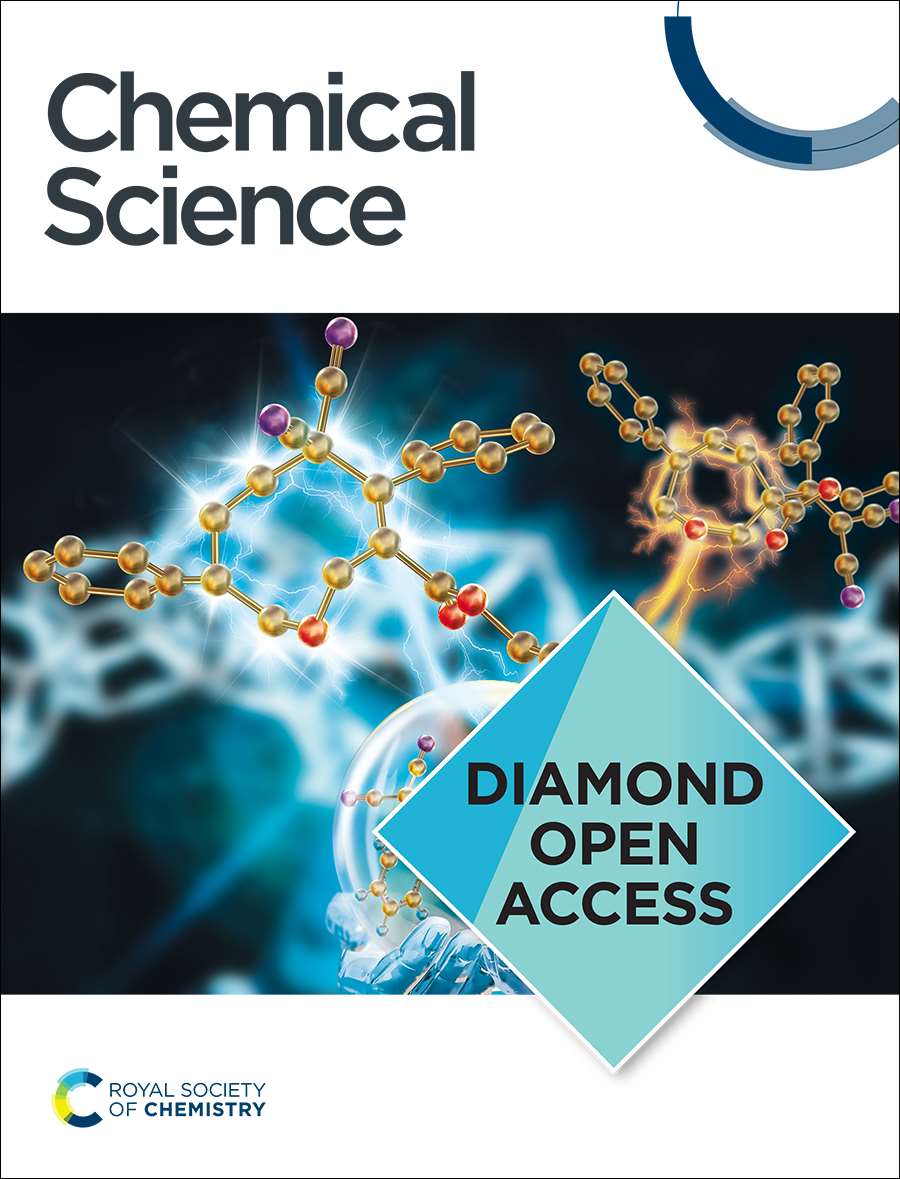A Mesityl-Functionalized Double-Boron-Nitrogen-Oxygen-Embedded Multi-Resonance Framework Achieves Anti-Quenching Narrowband Deep-Blue Electroluminescence with EQE over 30% and CIEy of 0.046
IF 7.6
1区 化学
Q1 CHEMISTRY, MULTIDISCIPLINARY
引用次数: 0
Abstract
Developing highly efficient deep-blue multi-resonance thermal activated delayed fluorescence (MR-TADF) materials for ultra-high-definition organic light-emitting diodes (OLEDs) displays that meet the stringent BT.2020 standard remains a significant challenge. In this study, we present a strategy to achieve high-performance deep-blue MR-TADF emitters by integrating a large π-conjugated double-boron-embedded MR skeleton with strategically positioned peripheral steric hinderance groups. The developed molecule, DMBNO, exhibits a narrow full-width at half maximum (FWHM) of 19 nm, with a deep-blue emission peak at 444 nm in diluted toluene solutions. Additionally, it achieves high photoluminescence quantum yield (PLQY) and a horizontal ratios of emitting dipole orientation (Θ//) exceeding 90% in doped films. Notably, DMBNO demonstrates anti-quenching properties and effectively suppresses spectrum broadening. Consequently, OLEDs based on DMBNO achieve a high maximum external quantum efficiency (EQEmax) of 32.3%, with an impressive Commission Internationale de l'Eclairage (CIE) y-coordinate of 0.046, fully satisfying the BT.2020 blue gamut at a high doping concentration of 10 wt%. These findings offer valuable insights into molecular design tactics for deep-blue MR-TADF emitters featuring high efficiency, ultra-pure color, and anti-quenching characteristics.一种介叔基功能化双硼氮氧包埋多共振框架实现了抗猝灭窄带深蓝电致发光,EQE大于30%,CIEy为0.046
为超高清有机发光二极管(oled)显示器开发高效的深蓝色多共振热激活延迟荧光(MR-TADF)材料,满足严格的BT.2020标准,仍然是一项重大挑战。在这项研究中,我们提出了一种策略,通过集成一个大的π共轭双硼嵌入MR骨架和战略性定位的外围位阻基团来实现高性能的深蓝MR- tadf发射器。所制备的DMBNO在稀释甲苯溶液中具有窄的半峰全宽(FWHM)为19 nm,在444 nm处有一个深蓝色的发射峰。此外,它在掺杂薄膜中实现了高光致发光量子产率(PLQY)和发光偶极子取向的水平比(Θ//)超过90%。值得注意的是,DMBNO具有抗猝灭性能,并能有效抑制光谱展宽。因此,基于DMBNO的oled实现了高达32.3%的最大外量子效率(EQEmax),具有令人瞩目的国际发光委员会(CIE)的y坐标0.046,在高掺杂浓度为10 wt%时完全满足BT.2020蓝色域。这些发现为具有高效率、超纯色和抗猝灭特性的深蓝色MR-TADF发射器的分子设计策略提供了有价值的见解。
本文章由计算机程序翻译,如有差异,请以英文原文为准。
求助全文
约1分钟内获得全文
求助全文
来源期刊

Chemical Science
CHEMISTRY, MULTIDISCIPLINARY-
CiteScore
14.40
自引率
4.80%
发文量
1352
审稿时长
2.1 months
期刊介绍:
Chemical Science is a journal that encompasses various disciplines within the chemical sciences. Its scope includes publishing ground-breaking research with significant implications for its respective field, as well as appealing to a wider audience in related areas. To be considered for publication, articles must showcase innovative and original advances in their field of study and be presented in a manner that is understandable to scientists from diverse backgrounds. However, the journal generally does not publish highly specialized research.
 求助内容:
求助内容: 应助结果提醒方式:
应助结果提醒方式:


